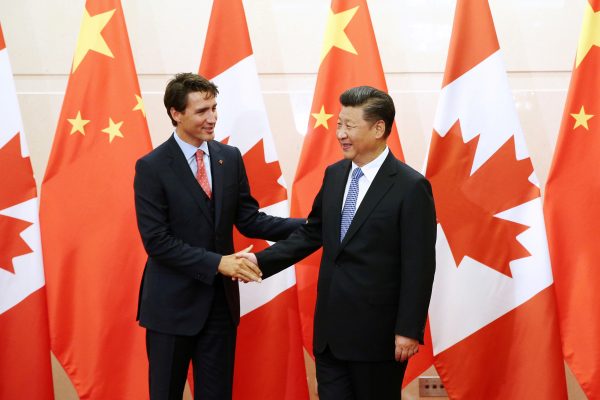The ‘new normal’ involves banning Huawei and ZTE from Canada’s 5G telecommunication network infrastructure, a new ‘Indo-Pacific Strategy’, Canadian warships in the Taiwan Strait and the absence of ministerial visits. There is no desire from either side to reset the agenda in a more positive direction.
The election of US President Joe Biden and the Russian invasion of Ukraine have bolstered Canada’s eagerness to follow the US lead and become a key partner in the Western alliance — where China is a shadow adversary, if not an outright enemy.
While the ‘4Cs’ strategy (coexist, compete, cooperate and challenge) leaves room for collaboration, there is no interest in pursuing it bilaterally and no initiatives to kick-start it multilaterally. Trade remains robust because China is a huge source of manufactured goods and Canada is a ready supplier of agricultural products and commodities that are in short supply in China. But all talk about a free trade agreement is now consigned to the history books.
Canada is determined to play some kind of a role in the Indo-Pacific, and its adoption of the term from the older ‘Asia-Pacific’ is itself a signal of its new alignment. But its military and security commitments are limited — constrained by the more robust commitments Canada made to NATO and to Ukraine, which has a significant domestic constituency in Canada beyond the moral and political sympathies its cause commands.
Sanctions on Russia conveniently allow Canada to redirect its fossil fuel hydrocarbon exports to Europe and attenuate some of the criticisms of its continued exploitation of the oilsands. China is no longer the favoured consumer nor the target investor in Canada’s energy sector, releasing Canada from a political dilemma that has complicated relations with the United States. Moving closer to the US stance has seen Canadian ships accompany their US Navy counterparts in sailing through the Taiwan Strait.
China has not hidden its displeasure with Canada either. Beijing is guilty of ‘buzzing’ Canadian aircraft that were enforcing UN sanctions against North Korea and keeping China’s ambassador to Canada at home for months on end.
Canadian Prime Minister Justin Trudeau was re-elected in September 2021. In his mandate letter appointing Mélanie Joly as Minister of Foreign Affairs, Trudeau tasked her with developing an Indo-Pacific strategy. On 9 June 2022, Joly announced an advisory committee made up of members from the private sector and academia to advise her on the strategy’s development. This announcement delays the delivery of a strategy with firm new commitments.
The advisory committee’s make-up reveals Ottawa’s priorities. The co-chairs include Professor Janice Stein, a veteran foreign affairs analyst, former minister of foreign affairs Pierre Pettigrew and G(irls)20 founder Farah Mohamed.
Members of the committee are a bipartisan mix, including former premier of New Brunswick and ambassador to the United States, Frank McKenna, former Conservative Party interim leader, Rona Ambrose, and former ambassador to China and Chair of Rio Tinto, Dominic Barton. Other members include academics from China and Southeast Asia and members of the investment and finance community.
The committee eschews notable ‘China hawks’ and tactfully includes those with interests in Southeast Asia. No committee members or advisors are from the security and defence community — an obvious signal to steer away from a hard-balancing security-first approach.
The Prime Minister and the Minister of Foreign Affairs clearly prefer a nuanced Indo-Pacific policy, avoiding ‘containment’ of China without actively pursuing engagement. This arrangement reflects Canada’s interests and available resource commitments. It also reflects a shift from an Asia policy centred on China towards one variably focussed on multiple partnerships.
The ‘new normal’ of Canada’s relations with China and the Indo-Pacific continues Canada’s Atlanticist position as a Western ally with only limited material commitments to Asia. Sadly, the development of an Indo-Pacific strategy does not involve a robust pivot to Asia in strategic terms.
Jeremy Paltiel is Professor of Political Science at Carleton University, Ottawa.

